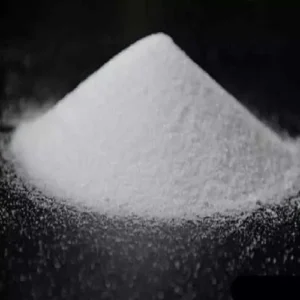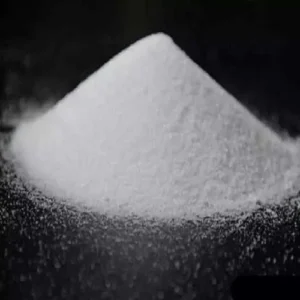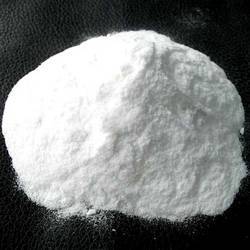Carbonate
Carbonate Chemicals: Sodium Bicarbonate, Soda Ash Light, and Soda Ash Dense
Carbonate chemicals are a diverse group of compounds that play essential roles in various industrial, commercial, and household applications. Three prominent members of this family are sodium bicarbonate (baking soda), soda ash light, and soda ash dense. In this comprehensive guide, we’ll explore the properties, uses, and significance of these carbonate chemicals.
Sodium Bicarbonate (Baking Soda)
Introduction
Sodium bicarbonate, commonly known as baking soda, is a white, crystalline compound with the chemical formula NaHCO3. It has a wide range of applications across industries, but it is perhaps best known for its culinary and household uses.
Properties
- Chemical Formula: NaHCO3
- Appearance: White, crystalline powder
- Solubility: Highly soluble in water
- pH Level: Alkaline (pH around 8.3)
- Odor: Slightly salty and alkaline
- Taste: Mildly salty and alkaline
Uses
– Sodium bicarbonate is a leavening agent used in baking. It produces carbon dioxide gas when combined with acidic ingredients like vinegar or yogurt, causing dough or batter to rise, resulting in light and fluffy baked goods.
– Baking soda is an effective, non-toxic cleaning agent. It can be used to scrub surfaces, neutralize odors in refrigerators, and remove stains from fabrics.
– It is found in some toothpaste and mouthwash products for its mild abrasive and deodorizing properties. It’s also used in bath products for its soothing qualities.
– Sodium bicarbonate can be used as an antacid to relieve heartburn and indigestion. Some people also use it as a home remedy for certain ailments.
– It is used in some fire extinguishers to smother small fires.
-Sodium bicarbonate is employed in various industrial processes, such as textile and leather manufacturing, and as a pH buffer in chemical laboratories.
Soda Ash Light (Sodium Carbonate)
Introduction
Soda ash light, also known as sodium carbonate or soda crystals, is a white, odorless powder with the chemical formula Na2CO3. It plays a vital role in multiple industrial applications, ranging from glass and detergents to water treatment and mining.
Properties
- Chemical Formula: Na2CO3
- Appearance: White, odorless powder
- Solubility: Highly soluble in water
- pH Level: Alkaline (pH around 11.5)
- Taste: Alkaline and bitter
Uses
- Glass Manufacturing: Soda ash is a fundamental ingredient in the production of glass, acting as a flux to lower the melting point of silica, making it easier to shape and mold glass products.
- Detergents and Soaps: It is a key component in many detergents and soaps, aiding in the removal of dirt, grease, and stains by softening water and enhancing the cleaning action.
- Water Treatment: Soda ash is used to adjust the pH levels in water treatment processes, ensuring that water is safe for consumption.
- Chemical Manufacturing: It serves as a chemical reagent in various industrial processes, such as the production of chemicals, dyes, and paper.
- Textile Industry: Soda ash is used in the dyeing process of textiles and helps to fix dyes onto fabrics.
- Mining: It is employed in the extraction of metals, particularly in flotation processes to separate minerals from ores.
- Food Processing: In food applications, it regulates acidity levels, acts as a stabilizer, and contributes to food leavening.
Soda Ash Dense (Sodium Carbonate)
Introduction
Soda ash dense is a dense, granular form of sodium carbonate with the same chemical formula as soda ash light (Na2CO3). While it shares many applications with soda ash light, it is often favored for applications that require a more concentrated form of the compound.
Properties
- Chemical Formula: Na2CO3
- Appearance: Dense, granular form
- Solubility: Highly soluble in water
- pH Level: Alkaline (pH around 11.5)
- Taste: Alkaline and bitter
Uses
Like soda ash light, soda ash dense is a crucial component in glass production, aiding in reducing the melting point of silica and facilitating the glass-forming process.
It is a primary ingredient in detergents and soaps, contributing to effective cleaning and stain removal.
Soda ash dense is used in water treatment facilities to control pH levels and ensure water safety.
It serves as a chemical reactant in various industrial processes, such as chemical manufacturing and the production of sodium salts.
In metallurgy, soda ash dense is employed in processes like flotation, refining, and the extraction of non-ferrous metals.
It plays a role in the pulp and paper industry as an alkaline agent in the pulping and bleaching of paper.
Comparison
- Appearance: Sodium bicarbonate is a white crystalline powder, while both soda ash light and soda ash dense are white, granular materials.
- Chemical Formula: Sodium bicarbonate has the formula NaHCO3, whereas soda ash light and soda ash dense share the formula Na2CO3.
- Solubility: All three chemicals are highly soluble in water.
- pH Level: Sodium bicarbonate has a pH of around 8.3 (alkaline). Soda ash light and soda ash dense have a pH of around 11.5 (strongly alkaline).
- Taste: Sodium bicarbonate has a mildly salty and alkaline taste. Soda ash light and soda ash dense have a bitter and alkaline taste.
- Uses: Sodium bicarbonate is primarily used in cooking, cleaning, and personal care. Soda ash light and soda ash dense have industrial
Showing all 6 results
-
Carbonate
Caustic Soda Pearls Flakes
-
Carbonate
Soda Ash Dense For Sale
-
Carbonate
Soda Ash Light
-
Carbonate
Sodium Bicarbonate Feed Grade
-
Carbonate
Sodium Bicarbonate Food Grade
-
Carbonate
Sodium Bicarbonate Technical Grade





